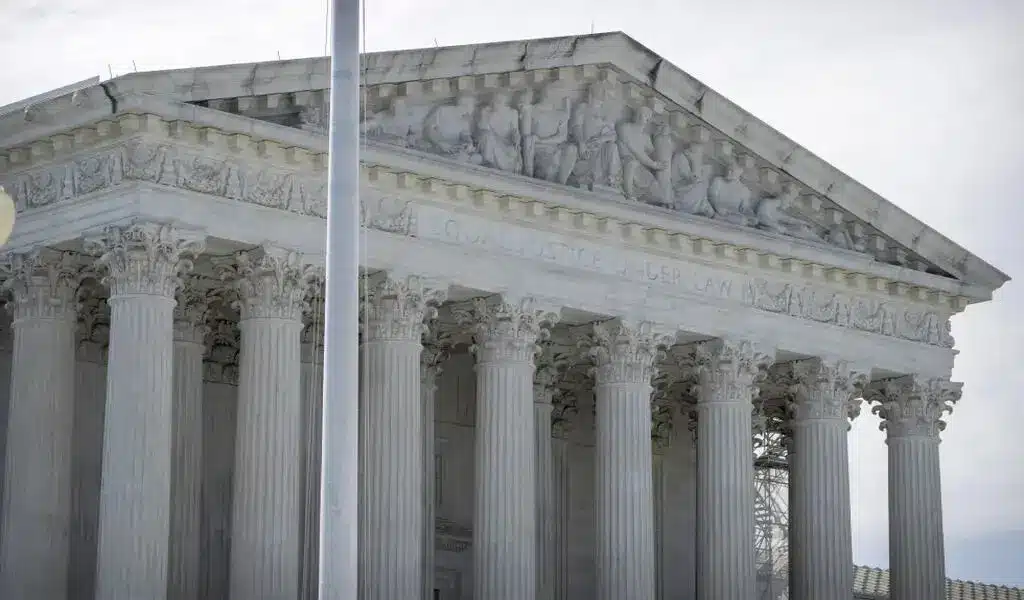News
China’s Growing Influence on Myanmar’s Generals
China has emerged as the most important outside player in Myanmar’s escalating crisis, endorsing the military administration just as the generals are losing control of large swaths of the country and consolidating dominance over various ethnic armed factions on their shared borders.
Last month, Chinese Foreign Minister Qn Gng made his first official visit to Myanmar, meeting with junta Senior General Min Aung Hlaing in Naypyidaw. Peace talks between ethnic resistance organisations (EROs) and the junta were also held in Beijing. Meanwhile, the military’s proxies, the Union Solidarity and Development Party (USDP), paid a visit to Yunnan Province.
Analysts worry that Beijing has gained significant clout over Myanmar’s struggling leadership and a number of armed players operating along the country’s porous borders. For more over two years, the junta has used Chinese and Russian fighter jets and weapons to kill, airstrike, and shoot down people and resistance fighters throughout the country.
China has ceased aggressively pressuring the state to resume Myanmar’s democratic transition, as well as expressing support for jailed leader Aung San Suu Kyi and her National League for Democracy (NLD) party. It has continued to ignore the underground National Unity administration (NUG), a parallel administration formed by elected and deposed NLD MPs.
The growing weight of China in Myanmar
Experts and diplomats warn that this is not without risks. According to some estimates, Myanmar’s generals control less than half of the country, and efforts to bring them to the bargaining table with ethnic forces have yet to yield dividends. Beijing’s backing also shields the junta from international pressure to back down, extending the civil conflict and jeopardising China’s strategic interests.
However, Chinese officials are unlikely to see it that way. China intends to ensure that Myanmar’s fragmentation — comparable to China’s historical “Seven Warring States” period over 2,200 years ago, according to one seasoned Burmese observer — will fend off any significant Western presence.
China’s increasing power
The growing weight of Beijing in Myanmar, a country larger than France situated between India, China, and Southeast Asia, has significant strategic ramifications for the area. The junta intends to provide Beijing with access to the Indian Ocean via a projected Chinese-led deep-sea port in western Myanmar, as well as railways and roadways connecting the port to Yunnan via northern Myanmar.
Myanmar’s military has also openly supported Russia’s invasion of Ukraine and China’s claim to Taiwan. This has the potential to upset the balance of power in Southeast Asia, where the United States and China have been battling for influence.
According to China scholar and former diplomat Michael Ng, Beijing’s viewpoint is related to internal politics, after President X Jinping centralised decision making and marginalised the foreign affairs ministry.

Support for General Min Aung Hlaing
“In the same month [March] that he secured a convention-breaking third term, Xi paid a state visit to Moscow even as Russia continues to bomb and pillage Ukraine,” Ng, a former Hong Kong government official in charge of Southeast Asian affairs, said.
“It is clear that Xi is doubling down on authoritarian regimes worldwide as long as they support his ambitions.” It’s not surprising that Xi sent Qin Gang to Myanmar to show his support for Min Aung Hlaing.”
According to many Chinese sources, Min Aung Hlaing’s leadership has been pushing for Chinese investment to return. Under the Myanmar junta, which has stopped releasing details of investment permits, Chinese investments rank first among permitted foreign direct investments.
“China is now backing the junta,” a diplomat in Yangon observed, referring to the regime’s extensive interaction with the Chinese government.
According to the diplomat, the important concern is how the regime would accommodate China’s economic and geopolitical objectives in Myanmar, which include the projected port, dams, and highways.
A decade of reformist governments, first by Thein Sein and later Aung San Suu Kyi, strove to connect big infrastructure ideas with Myanmar’s economic and environmental objectives, but the junta lacks the competence and political clout to do so.
China had long regarded Myanmar as its backyard under past military administrations, but felt marginalised when then-President Thein Sein opened up the country in 2011 and launched a process that resulted in modest democratic reforms in the hitherto isolated country.
China’s Access to the Indian Ocean
China recently sponsored discussions between the junta and three members of Myanmar’s ethnic army coalition, known as the Northern Brotherhood Alliance, in the Mongla district of northern Myanmar’s Shan state, near China’s Yunnan Province.
According to VOA, the meetings were intended to persuade the ethnic armies to support the junta’s planned elections, but they ended without an accord on June 2. Mongla is a Chinese-speaking region under the grip of a rebel faction.
The Chinese government’s major objective in Myanmar is to get access to the Indian Ocean via the proposed port of Kyaukphyu, as well as connectivity from Rakhine to Yunnan.
According to Tower, Beijing is providing significant political, economic, and tactical military support to the United Wa State Army, a formidable Chinese-speaking militia organisation dominating territory in northern Shan State and pledging nominal respect to Myanmar’s sovereignty.
As a result, China is “tilting the balance of power in favour of the Wa and supporting consolidation of the critical northern EAOs under UWSA leadership,” according to Tower. “Beijing is using relations with northern armed groups to put pressure on the junta, and in practise has abandoned its support for ASEAN’s leadership role in the Myanmar crisis.”
However, sources close to the Chinese say that Beijing was just dealing with whoever was in control.
“After keeping some distance with the Burmese generals since the coup,” a source close to Chinese government officials said, “China moved to fully engage with the State Administration Council (also known as SAC, the official name of the junta) a few months ago.” “The engagement has resumed, but the results haven’t.”
“China’s top priority in Myanmar is to gain access to the Indian Ocean through the proposed Kyaukphyu port and connectivity from Rakhine to Yunnan,” the source stated. “Chinese officials are aware of how unpopular the SAC is and how strong Aung San Suu Kyi’s support is.” However, Daw Suu went too far in her attempt to remove the Burmese military.”
Many will disagree with this evaluation. Suu Kyi struck a deal with the generals more than a decade ago and agreed to participate in the system under the military-drafted constitution, which banned her from becoming president and gave the military a large position in administration and parliament.
Read the Full story click here

News
Google’s Search Dominance Is Unwinding, But Still Accounting 48% Search Revenue

Google is so closely associated with its key product that its name is a verb that signifies “search.” However, Google’s dominance in that sector is dwindling.
According to eMarketer, Google will lose control of the US search industry for the first time in decades next year.
Google will remain the dominant search player, accounting for 48% of American search advertising revenue. And, remarkably, Google is still increasing its sales in the field, despite being the dominating player in search since the early days of the George W. Bush administration. However, Amazon is growing at a quicker rate.
Google’s Search Dominance Is Unwinding
Amazon will hold over a quarter of US search ad dollars next year, rising to 27% by 2026, while Google will fall even more, according to eMarketer.
The Wall Street Journal was first to report on the forecast.
Lest you think you’ll have to switch to Bing or Yahoo, this isn’t the end of Google or anything really near.
Google is the fourth-most valued public firm in the world. Its market worth is $2.1 trillion, trailing just Apple, Microsoft, and the AI chip darling Nvidia. It also maintains its dominance in other industries, such as display advertisements, where it dominates alongside Facebook’s parent firm Meta, and video ads on YouTube.
To put those “other” firms in context, each is worth more than Delta Air Lines’ total market value. So, yeah, Google is not going anywhere.
Nonetheless, Google faces numerous dangers to its operations, particularly from antitrust regulators.
On Monday, a federal judge in San Francisco ruled that Google must open up its Google Play Store to competitors, dealing a significant blow to the firm in its long-running battle with Fortnite creator Epic Games. Google announced that it would appeal the verdict.
In August, a federal judge ruled that Google has an illegal monopoly on search. That verdict could lead to the dissolution of the company’s search operation. Another antitrust lawsuit filed last month accuses Google of abusing its dominance in the online advertising business.
Meanwhile, European regulators have compelled Google to follow tough new standards, which have resulted in multiple $1 billion-plus fines.

Pixa Bay
Google’s Search Dominance Is Unwinding
On top of that, the marketplace is becoming more difficult on its own.
TikTok, the fastest-growing social network, is expanding into the search market. And Amazon has accomplished something few other digital titans have done to date: it has established a habit.
When you want to buy anything, you usually go to Amazon, not Google. Amazon then buys adverts to push companies’ products to the top of your search results, increasing sales and earning Amazon a greater portion of the revenue. According to eMarketer, it is expected to generate $27.8 billion in search revenue in the United States next year, trailing only Google’s $62.9 billion total.
And then there’s AI, the technology that (supposedly) will change everything.
Why search in stilted language for “kendall jenner why bad bunny breakup” or “police moving violation driver rights no stop sign” when you can just ask OpenAI’s ChatGPT, “What’s going on with Kendall Jenner and Bad Bunny?” in “I need help fighting a moving violation involving a stop sign that wasn’t visible.” Google is working on exactly this technology with its Gemini product, but its success is far from guaranteed, especially with Apple collaborating with OpenAI and other businesses rapidly joining the market.
A Google spokeswoman referred to a blog post from last week in which the company unveiled ads in its AI overviews (the AI-generated text that appears at the top of search results). It’s Google’s way of expressing its ability to profit on a changing marketplace while retaining its business, even as its consumers steadily transition to ask-and-answer AI and away from search.

Google has long used a single catchphrase to defend itself against opponents who claim it is a monopoly abusing its power: competition is only a click away. Until recently, that seemed comically obtuse. Really? We are going to switch to Bing? Or Duck Duck Go? Give me a break.
But today, it feels more like reality.
Google is in no danger of disappearing. However, every highly dominating company faces some type of reckoning over time. GE, a Dow mainstay for more than a century, was broken up last year and is now a shell of its previous dominance. Sears declared bankruptcy in 2022 and is virtually out of business. US Steel, long the foundation of American manufacturing, is attempting to sell itself to a Japanese corporation.
SOURCE | CNN
News
2024 | Supreme Court Won’t Hear Appeal From Elon Musk’s X Platform Over Warrant In Trump Case

Washington — Trump Media, The Supreme Court announced Monday that it will not hear an appeal from social media platform X about a search warrant acquired by prosecutors in the election meddling case against former President Donald Trump.
The justices did not explain their rationale, and there were no recorded dissents.
The firm, which was known as Twitter before being purchased by billionaire Elon Musk, claims a nondisclosure order that prevented it from informing Trump about the warrant obtained by special counsel Jack Smith’s team violated its First Amendment rights.
The business also claims Trump should have had an opportunity to exercise executive privilege. If not reined in, the government may employ similar tactics to intercept additional privileged communications, their lawyers contended.
Supreme Court Won’t Hear Appeal From Elon Musk’s X Platform Over Warrant In Trump Case
Two neutral electronic privacy groups also joined in, urging the high court to hear the case on First Amendment grounds.
Prosecutors, however, claim that the corporation never shown that Trump utilized the account for official purposes, therefore executive privilege is not a problem. A lower court also determined that informing Trump could have compromised the current probe.

Trump utilized his Twitter account in the weeks preceding up to his supporters’ attack on the Capitol on January 6, 2021, to spread false assertions about the election, which prosecutors claim were intended to create doubt in the democratic process.
The indictment describes how Trump used his Twitter account to encourage his followers to travel to Washington on Jan. 6, pressuring Vice President Mike Pence to reject the certification, and falsely claiming that the Capitol crowd, which battered police officers and destroyed glass, was peaceful.
Supreme Court Won’t Hear Appeal From Elon Musk’s X Platform Over Warrant In Trump Case
That case is now moving forward following the Supreme Court’s verdict in July, which granted Trump full immunity from criminal prosecution as a former president.
The warrant arrived at Twitter amid quick changes implemented by Musk, who bought the company in 2022 and has since cut off most of its workforce, including those dedicated to combating disinformation and hate speech.
SOURCE | AP
News
The Supreme Court Turns Down Biden’s Government Appeal in a Texas Emergency Abortion Matter.

(VOR News) – A ruling that prohibits emergency abortions that contravene the Supreme Court law in the state of Texas, which has one of the most stringent abortion restrictions in the country, has been upheld by the Supreme Court of the United States. The United States Supreme Court upheld this decision.
The justices did not provide any specifics regarding the underlying reasons for their decision to uphold an order from a lower court that declared hospitals cannot be legally obligated to administer abortions if doing so would violate the law in the state of Texas.
Institutions are not required to perform abortions, as stipulated in the decree. The common populace did not investigate any opposing viewpoints. The decision was made just weeks before a presidential election that brought abortion to the forefront of the political agenda.
This decision follows the 2022 Supreme Court ruling that ended abortion nationwide.
In response to a request from the administration of Vice President Joe Biden to overturn the lower court’s decision, the justices expressed their disapproval.
The government contends that hospitals are obligated to perform abortions in compliance with federal legislation when the health or life of an expectant patient is in an exceedingly precarious condition.
This is the case in regions where the procedure is prohibited. The difficulty hospitals in Texas and other states are experiencing in determining whether or not routine care could be in violation of stringent state laws that prohibit abortion has resulted in an increase in the number of complaints concerning pregnant women who are experiencing medical distress being turned away from emergency rooms.
The administration cited the Supreme Court’s ruling in a case that bore a striking resemblance to the one that was presented to it in Idaho at the beginning of the year. The justices took a limited decision in that case to allow the continuation of emergency abortions without interruption while a lawsuit was still being heard.
In contrast, Texas has been a vocal proponent of the injunction’s continued enforcement. Texas has argued that its circumstances are distinct from those of Idaho, as the state does have an exemption for situations that pose a significant hazard to the health of an expectant patient.
According to the state, the discrepancy is the result of this exemption. The state of Idaho had a provision that safeguarded a woman’s life when the issue was first broached; however, it did not include protection for her health.
Certified medical practitioners are not obligated to wait until a woman’s life is in imminent peril before they are legally permitted to perform an abortion, as determined by the state supreme court.
The state of Texas highlighted this to the Supreme Court.
Nevertheless, medical professionals have criticized the Texas statute as being perilously ambiguous, and a medical board has declined to provide a list of all the disorders that are eligible for an exception. Furthermore, the statute has been criticized for its hazardous ambiguity.
For an extended period, termination of pregnancies has been a standard procedure in medical treatment for individuals who have been experiencing significant issues. It is implemented in this manner to prevent catastrophic outcomes, such as sepsis, organ failure, and other severe scenarios.
Nevertheless, medical professionals and hospitals in Texas and other states with strict abortion laws have noted that it is uncertain whether or not these terminations could be in violation of abortion prohibitions that include the possibility of a prison sentence. This is the case in regions where abortion prohibitions are exceedingly restrictive.
Following the Supreme Court’s decision to overturn Roe v. Wade, which resulted in restrictions on the rights of women to have abortions in several Republican-ruled states, the Texas case was revisited in 2022.
As per the orders that were disclosed by the administration of Vice President Joe Biden, hospitals are still required to provide abortions in cases that are classified as dire emergency.
As stipulated in a piece of health care legislation, the majority of hospitals are obligated to provide medical assistance to patients who are experiencing medical distress. This is in accordance with the law.
The state of Texas maintained that hospitals should not be obligated to provide abortions throughout the litigation, as doing so would violate the state’s constitutional prohibition on abortions. In its January judgment, the 5th United States Circuit Court of Appeals concurred with the state and acknowledged that the administration had exceeded its authority.
SOURCE: AP
SEE ALSO:
Could Last-Minute Surprises Derail Kamala Harris’ Campaign? “Nostradamus” Explains the US Poll.
-

 News4 years ago
News4 years agoLet’s Know About Ultra High Net Worth Individual
-
Entertainment2 years ago
Mabelle Prior: The Voice of Hope, Resilience, and Diversity Inspiring Generations
-
News11 years ago
Enviromental Groups Tell Mekong Leaders Lao Dam Evaluation Process Flawed
-

 Health4 years ago
Health4 years agoHow Much Ivermectin Should You Take?
-

 Tech3 years ago
Tech3 years agoTop Forex Brokers of 2023: Reviews and Analysis for Successful Trading
-

 Lifestyles3 years ago
Lifestyles3 years agoAries Soulmate Signs
-

 Entertainment3 years ago
Entertainment3 years agoWhat Should I Do If Disney Plus Keeps Logging Me Out of TV?
-

 Health3 years ago
Health3 years agoCan I Buy Ivermectin Without A Prescription in the USA?




